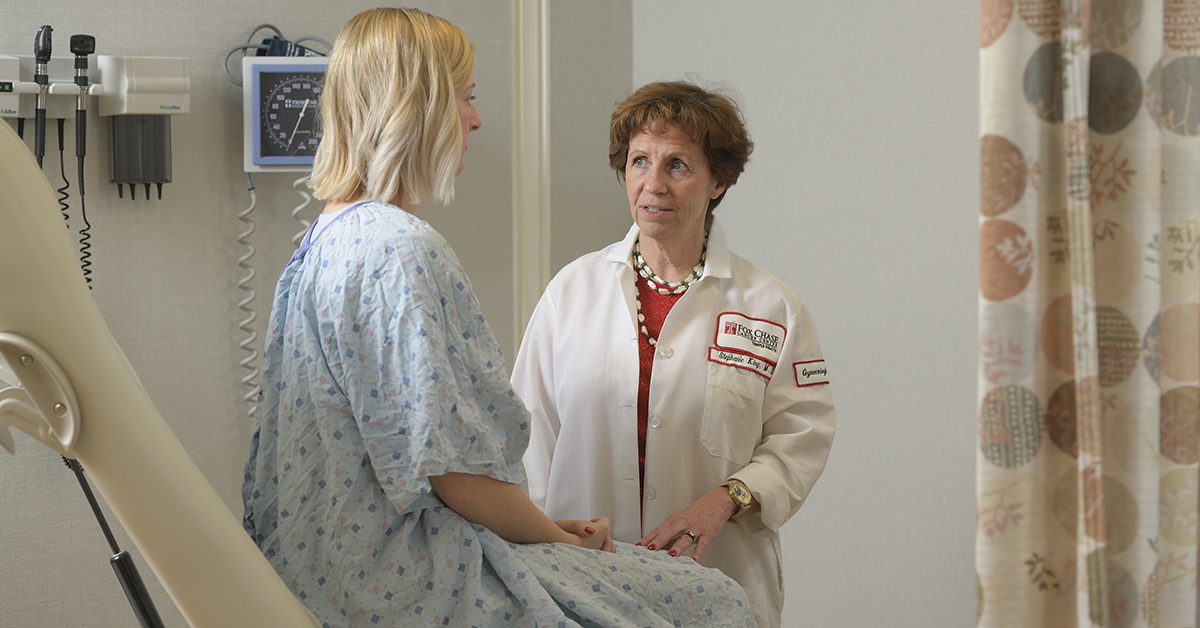
Ovarian Cancer: Do You Know the Signs and Symptoms?
-
An ovarian cancer diagnosis can be scary. The disease has a bad reputation, probably because many women who have it aren’t diagnosed until it’s progressed to a late stage. But the outlook for this cancer is changing rapidly.
“Ovarian cancer is a treatable cancer,” said Stephanie Angela King, MD a gynecologic oncologist at Fox Chase Cancer Center.
“When people hear about it, they think it’s a death sentence. But most people will have an initial response with chemotherapy and go into remission,” she continued. “This type of cancer does tend to reoccur, but many patients live for a number of years and have a relatively good quality of life.”
Knowing the risk factors, signs and symptoms of ovarian cancer is key. According to the American Cancer Society (ACS), when ovarian cancer is found early, over 90 percent of women live longer than five years after diagnosis.
Risk factors
Doctors don’t know exactly what causes ovarian cancer. But some factors can mean a higher chance of developing the disease. The ACS identifies these issues as increasing risk:
- Getting older. Most ovarian cancers develop after menopause
- Being overweight
- Having children after age 35 or never having a full-term pregnancy
- Taking hormone therapy, particularly estrogen alone, after menopause
- Having a family history of ovarian, breast, or colorectal cancer
Signs and symptoms
The most common signs and symptoms of ovarian cancer include:
- Bloating
- Pelvic or abdominal (belly) pain
- Trouble eating or feeling full quickly
- Having to urinate often or feeling like you have to go all the time
Many women think these changes are just a part of getting older. But these signs and symptoms deserve attention.
“If you have these symptoms nonstop— you’re having bloating and you’re not feeling right and your bowels aren’t working normally—call someone and get checked out,” King said. “Many women with ovarian cancer say their symptoms are similar to how they would feel right before they were going to get their period, but all the time. Most of these women are post-menopausal, however.”
Prompt attention to signs and symptoms may improve the chances of an early diagnosis and successful treatment.
Detecting and treating ovarian cancer
The first step in diagnosing this disease is a physical exam. Your doctor will check for an enlarged ovary or signs of fluid in the abdomen. Further tests, imaging, and a consultation with a gynecologic oncologist may follow.
Treatment varies depending on the type of ovarian cancer, its stage, and any special considerations. Most women will have surgery to remove the tumor. You might need additional treatment like chemotherapy, hormone therapy, or targeted therapy—which attacks cancer cells while doing little damage to healthy cells.
Looking forward
Scientists are making strides in understanding the genes that put some women at high risk for ovarian cancer. This is expected to lead to new drugs for preventing and treating familial ovarian cancer.
A new test called OVA1 can measure the levels of five proteins in the blood of women who have an ovarian tumor—making it easier to determine if that tumor is at low or high risk of being cancerous.
And new chemotherapy drugs and drug combinations for ovarian cancer are being tested.
These are just some of the promising changes happening with the disease.
“There’s a lot of research going on, and women have to understand that there are many therapies and targeted therapies available,” King said. “It’s not just the standard chemo, which is rather toxic and hard to handle. So many other treatments are being developed. There’s always hope.”
Learn more about ovarian cancer treatment at Fox Chase Cancer Center.
